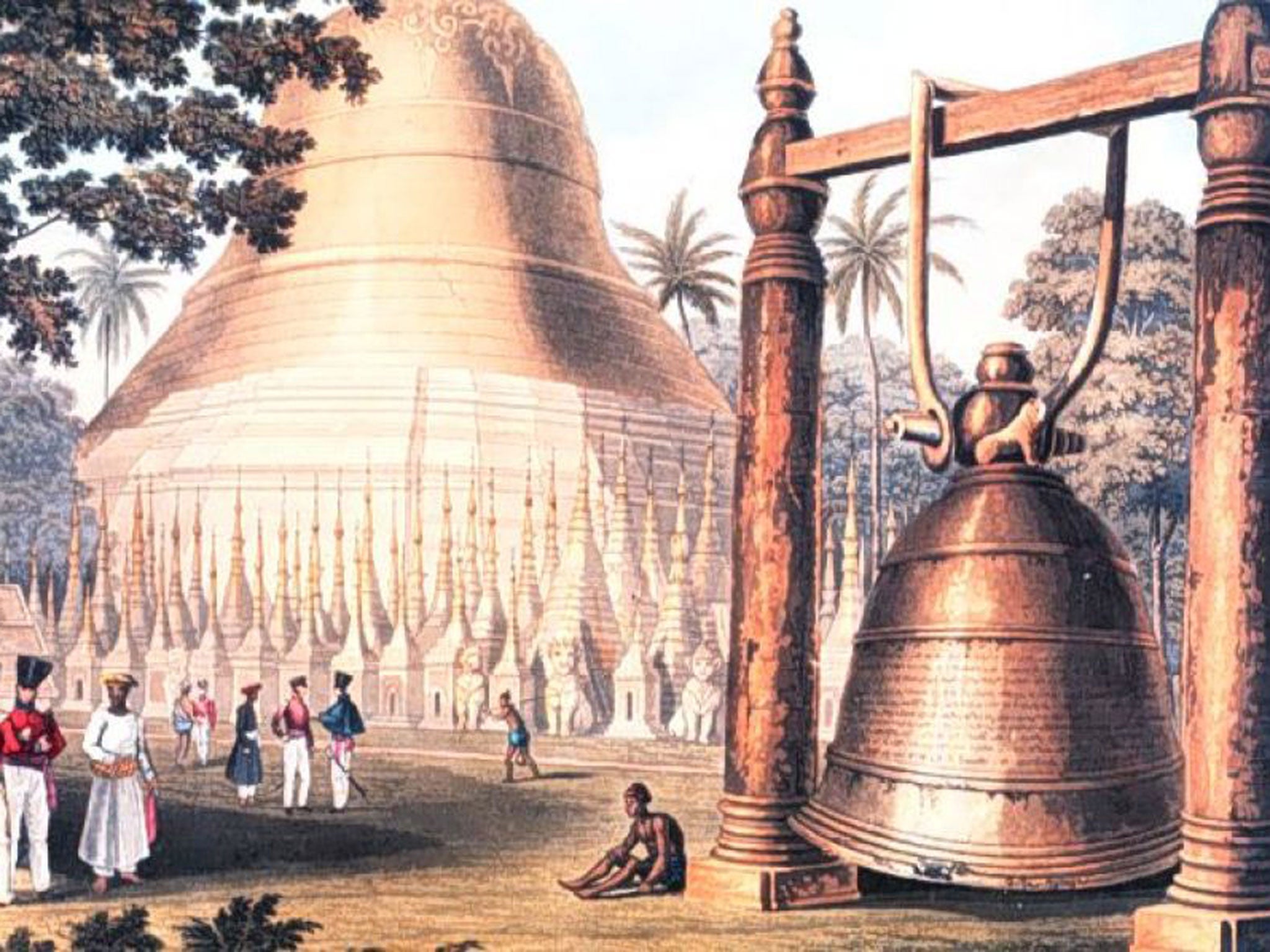Mystery of the world’s largest bell continues to lure treasure hunters and Burma’s elite
Having lain underwater for 400 years, artefact may be out of sight, but it is not out of mind

For more than 400 years the Dhammazedi bell bell has supposedly lain at the bottom of a Burmese river, luring adventurers and treasure-hunters from near and far.
Their inability to recover what is reckoned to be the world’s largest bell has added to stories the 270 tonne treasure must be protected by spirits.
Now, a leading Burmese businessman and politician has announced his plan to fund another hunt for the bell, spending more than $10m if that is what is required to locate it and return it to the glittering Shwedagon pagoda, from where it was originally looted.
“We’ve already hired big ships to salvage the bell. If we can salvage the bell, we will put it on display at Shwedagon,” Khin Shwe told a local journal, according to the Irrawaddy website.
He added: “One foreign expert predicted that salvaging the bell will cost between $5m and $10m. Whatever the cost - I’m ready to spend any amount.”
The story of the Dhammazedi bell seemingly fuses legend and documented evidence. Originally cast in 1484 by King Dhammazedi, a Mon ruler who capital was located in the city of Bago, the bell was given to the monks at Rangoon’s Shwedagon.
One hundred years later, a gem merchant from Venice, Gaspero Balbi, visited the pagoda and wrote in his diary of seeing the bell, engraved with writing he was unable to understand. “I found in a hall a very large bell which we measured, and found to be seven paces and three hand breadths,” he said.
In 1608, Filipe de Brito e Nicote, a Portuguese mercenary who controlled an area on the southern banks of the Rangoon river, seized the bell and tried to carry it back to his base. While transporting it across the river, the bell slipped into the water, sinking a barge and a Portuguese warship.
Khin Shwe, the man behind the project, is a member of the upper house of Burma’s parliament and part of President Thein Sein’s Union Solidarity and Development Party.
His firm, the Zay Kabar Company, is one of Burma’s leading construction and real estate businesses and reports suggest it did a lot of work for the military junta that previously ruled the country. More recently his company has been involved in a controversial land rights dispute with farmers on the northern fringes of Rangoon.
Aung Naing Oo, a spokesman for Mr Shwe, said on Friday that the tycoon was in Thailand and would not be able to comment about his reported plans until he returned to Burma.
If the 61-year businessman does proceed to try and try recover the bell, he will hardly have been the first person to do so. Over the years, a series of both Burmese and international projects have tried to locate and raise the massive bell, believed to be cast from copper, gold, silver and tin.
Most of the searches have concentrated the place where the Rangoon river is joined by the Bago river, close to a place called Monkey Point and opposite the township where Filipe de Brito e Nicote had established his base.
In 1995, an American diver, Jim Blunt, searched for the bell in conjunction with the Burmese authorities, carrying out 116 dives over two years and telling of his experiences in a documentary film. He claimed he banged his fist on the bell and was rewarded by a metallic sound.
Mr Blunt, who lives California, said in an email: “I began diving for the King Dhammazedi bell in December of 1995. After 10 dives, I was informed that the bell search area was cursed.”
He added: “Several divers had already died looking for the great bell, including two Myanmar Navy divers who became trapped inside a wreck and died horribly. Consequently, the search [began] for outside expertise.”
The most recent international effort to locate the bell was headed by Australian filmmaker Damien Lay, who had previously searched in Burma for the Lady Southern Cross, the plane of lost Australian aviator Sir Charles Kingsford Smith.
Speaking from Sydney, Mr Lay said he had looked at a different location to where most of the searches had been conducted and was convinced that he had found the spot where the bell lay. “We have exceptional data,” said Mr Lay, who said he had tried to pass his findings onto the Burmese authorities. He added: “All luck to them. It needs to be found.”
Khin Shwe, the businessman, is reportedly being advised by the abbot of Kyaik Htee Saung pagoda in northern Mon state. “King Dhammazedi was born on a Tuesday and so was the abbot,” he told the Snapshot journal. “So, I’m 100 per cent confident that this project will be a success.”
Join our commenting forum
Join thought-provoking conversations, follow other Independent readers and see their replies
0Comments